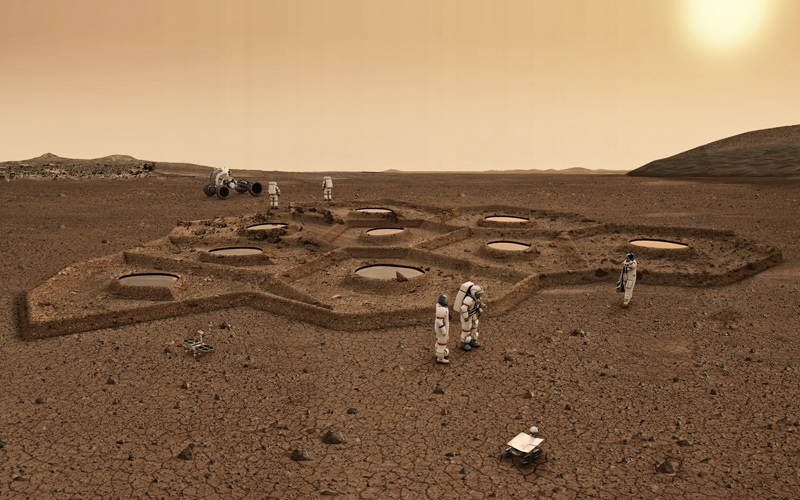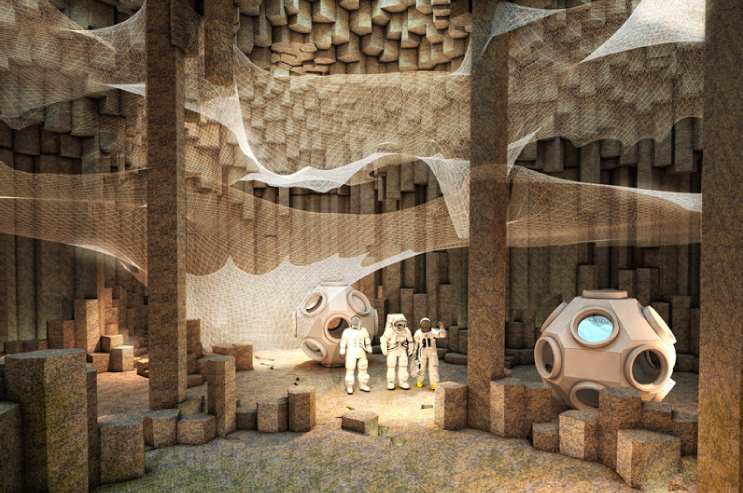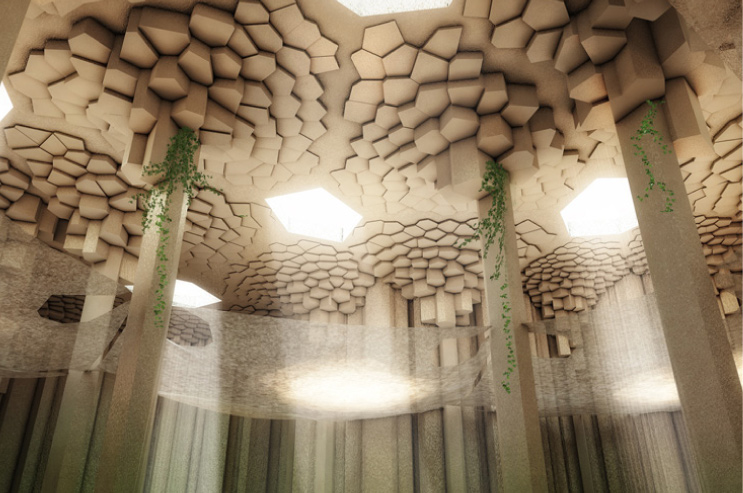-
Life•on•Mars
ZA Architects’ plan for living on the Red Planet

The underground colony would be lit by light wells cut through the Martian crust, and protected by banks of basalt from the biting surface winds and dust. (All images courtesy ZA Architects)“A new life awaits you in the off-world colonies! A chance to begin again in a golden land of opportunity and adventure”. This advertisement, memorably broadcast in the movie Bladerunner, finds echoes in the recent fever over the “red” land of opportunity. Mars missions, colonies and mining are all suddenly coming into focus as close-to-realistic propositions, getting everybody very hot under the collar.
Of course the reality on the surface itself wouldn’t be so toasty – the scorching red desert of myth is in fact a freezing, windy one. One of the most convincing current proposals for building and maintaining a Martian colony comes from ZA Architects, who’ve taken into account key facts learnt from the analysis of rock and earth samples collected by NASA’s Phoenix Lander explorations. Namely: much of Mars is made of basalt, with copious embedded water, ice, and even glaciers under the surface. -
ZA Architects, founded in 2009 by Dmitriy Zhuykov and Arina Ageeva, is an architecture and urbanism studio based in Dessau, Germany, which specialises in proposing new approaches to projects without predetermined aesthetics. The practice, by following a comprehensive philosophic approach which incorporates an emotional component, aims to create design solutions which synthesise brief, context, and functional requirements.


The lofty excavated caverns of the colony would be supported by hexagonal basalt columns and strung with basalt roving, to divide and structure the space.
The idea is to send an initial mission out with digging robots to excavate basalt caves, with hexagonal stone columns to support them. A mission with astronauts would follow, assembling start-up facilities to source water and process oxygen from the underground glaciers. They would also set up a basalt processing plant, where robots would transform crushed rock into basalt wool for insulation, and roving: fibrous cable stronger than steel that can be used to weave living pods and other facilities.
With samples of Martian soil having indicated the potential for growing crops such as asparagus, the basics of water, food and shelter could therefore all be locally sourced. Of course a troglodytic existence, eating asparagus, surrounded by spider-like robots might not be to everybody’s taste, but this clever solution of mine-as-colony, tucked below the inhospitable surface, makes a lot of sense. I (rgw)
-
Search
-
FIND PRODUCTS
PRODUCT GROUP
- Building Materials
- Building Panels
- Building technology
- Façade
- Fittings
- Heating, Cooling, Ventilation
- Interior
- Roof
- Sanitary facilities
MANUFACTURER
- 3A Composites
- Alape
- Armstrong
- Caparol
- Eternit
- FSB
- Gira
- Hagemeister
- JUNG
- Kaldewei
- Lamberts
- Leicht
- Solarlux
- Steininger Designers
- Stiebel Eltron
- Velux
- Warema
- Wilkhahn
-
Follow Us
Tumblr
New and existing Tumblr users can connect with uncube and share our visual diary.
»Intelligence starts with improvisation.«
Yona Friedman
Keyboard Shortcuts
- Supermenu
- Skip Articles
- Turn Pages
- Contents


